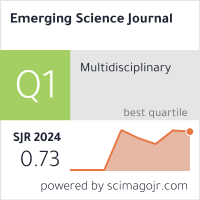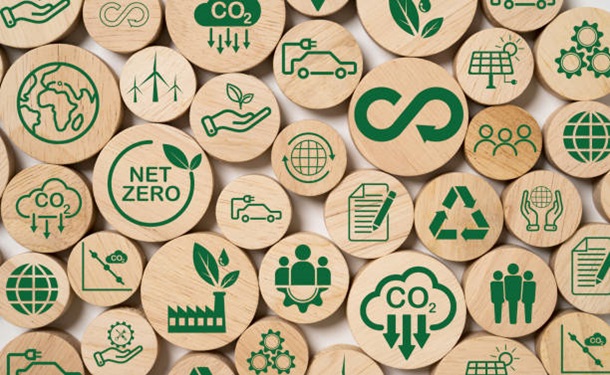Driving Social Entrepreneurship Among Students: Investigating Through PLS-SEM and fsQCA Approaches in Emerging Economies
Downloads
This study aims to identify the relationship between social self-efficacy, social innovation, resilience, and proactive personality concerning university students’ behavioral intention to engage in social entrepreneurship, particularly in emerging economies, like Bangladesh. A structured questionnaire was utilized to collect quantitative data from 540 students in various disciplines of study as part of the study's quantitative research methodology using partial least squares-Structural Equation Modelling (PLS-SEM) and fuzzy-set Qualitative Comparative Analysis (fsQCA). The analysis reveals that proactive personality traits are associated with the social entrepreneurship intention (SEI) and that leadership orientation is also significant to SEI. The study also demonstrates that social entrepreneurial activities tend toward higher social self-efficacy and resilience, making it crucial to focus on such characteristics while facing social risk and bearing innovations. This study's novelty lies in its focus on the unique combination of psychological traits—social self-efficacy, social innovation, resilience, and proactive personality—and their impact on university students' intention to engage in social entrepreneurship in emerging economies. Additionally, the research emphasizes the importance of integrating leadership skills and social innovation into academic curricula and policy development to foster social entrepreneurship. Practical implications indicate that leadership skills and social innovation should be included in the curricula of educational institutions, and supportive policies should be developed to create available resources for prospective social entrepreneurs.
Downloads
[1] Mthembu, A., & Barnard, B. (2019). Social Entrepreneurship: Objectives, Innovation, Implementation and Impact on Entrepreneurship. SSRN Electronic Journal, 1-43. doi:10.2139/ssrn.3343448.
[2] Watson, T. J. (2013). Entrepreneurship in action: Bringing together the individual, organizational and institutional dimensions of entrepreneurial action. Entrepreneurship and Regional Development, 25(5–6), 404–422. doi:10.1080/08985626.2012.754645.
[3] John, A., Selvaraj, V., & Jisham, M. (2024). Catalysts of social change and innovation: Mediating role of social self-efficacy and social support on social entrepreneurial intentions. African Journal of Science, Technology, Innovation and Development. doi:10.1080/20421338.2024.2393734.
[4] Bacq, S., & Alt, E. (2018). Feeling capable and valued: A prosocial perspective on the link between empathy and social entrepreneurial intentions. Journal of Business Venturing, 33(3), 333–350. doi:10.1016/j.jbusvent.2018.01.004.
[5] London, M. (2010). Understanding social advocacy: An integrative model of motivation, strategy, and persistence in support of corporate social responsibility and social entrepreneurship. Journal of Management Development, 29(3), 224–245. doi:10.1108/02621711011025768.
[6] Ebrashi, R. El. (2013). Social entrepreneurship theory and sustainable social impact. Social Responsibility Journal, 9(2), 188–209. doi:10.1108/SRJ-07-2011-0013.
[7] Liu, X., Lin, C., Zhao, G., & Zhao, D. (2019). Research on the effects of entrepreneurial education and entrepreneurial self-efficacy on college students’ entrepreneurial intention. Frontiers in Psychology, 10(Apr), 00869. doi:10.3389/fpsyg.2019.00869.
[8] Nowiński, W., Haddoud, M. Y., Lančarič, D., Egerová, D., & Czeglédi, C. (2019). The impact of entrepreneurship education, entrepreneurial self-efficacy and gender on entrepreneurial intentions of university students in the Visegrad countries. Studies in Higher Education, 44(2), 361–379. doi:10.1080/03075079.2017.1365359.
[9] Lumpkin, G. T., Moss, T. W., Gras, D. M., Kato, S., & Amezcua, A. S. (2013). Entrepreneurial processes in social contexts: How are they different, if at all? Small Business Economics, 40(3), 761–783. doi:10.1007/s11187-011-9399-3.
[10] Duncan-Horner, E. M., Farrelly, M. A., & Rogers, B. C. (2022). Understanding the social entrepreneur: a new intentions model for advancing equity, social justice and sustainability. Journal of Entrepreneurship in Emerging Economies, 14(3), 361–391. doi:10.1108/JEEE-10-2020-0359.
[11] Phills, J. A., Deiglmeier, K., & Miller, D. T. (2008). Rediscovering social innovation. Center for Social Innovation. Stanford Social Innovation Review, 12–13. doi:10.48558/GBJY-GJ47.
[12] Neneh, B. N., & Dzomonda, O. (2024). Transitioning from entrepreneurial intention to actual behaviour: The role of commitment and locus of control. International Journal of Management Education, 22(2). doi:10.1016/j.ijme.2024.100964.
[13] Ezeh, P. C., Nkamnebe, A. D., & Nkamnebe, O. E. (2025). Entrepreneurial intentions among academics in Nigeria: The mediating role of self-efficacy. Journal of the International Council for Small Business. doi:10.1080/26437015.2024.2442404.
[14] Ince, I., & Hahn, R. (2020). How dynamic capabilities facilitate the survivability of social enterprises: A qualitative analysis of sensing and seizing capacities. Journal of Small Business Management, 58(6), 1256–1290. doi:10.1111/jsbm.12487.
[15] Young, D. R., & Kim, C. (2015). Can social enterprises remain sustainable and mission-focused? Applying resiliency theory. Social Enterprise Journal, 11(3), 233–259. doi:10.1108/sej-02-2015-0005.
[16] Cope, J. (2011). Entrepreneurial learning from failure: An interpretative phenomenological analysis. Journal of Business Venturing, 26(6), 604–623. doi:10.1016/j.jbusvent.2010.06.002.
[17] Xu, F., Hsu, C., Wang, T., & Lowry, P. B. (2024). The antecedents of employees’ proactive information security behaviour: The perspective of proactive motivation. Information Systems Journal, 34(4), 1144–1174. doi:10.1111/isj.12488.
[18] Ślebarska, K., Stremska, A., & Kowalski, G. (2023). Managing effective labor market entry: proactive coping and self-employment intention among Polish small business owners. Central European Management Journal, 31(1), 115–129. doi:10.1108/cemj-03-2022-0040.
[19] Johari, J., Shamsudin, F. M., Zainun, N. F. H., Yean, T. F., & Yahya, K. K. (2022). Institutional leadership competencies and job performance: the moderating role of proactive personality. International Journal of Educational Management, 36(6), 1027–1045. doi:10.1108/IJEM-07-2021-0280.
[20] Domanski, D., Howaldt, J., & Kaletka, C. (2020). A comprehensive concept of social innovation and its implications for the local context–on the growing importance of social innovation ecosystems and infrastructures. European Planning Studies, 28(3), 454–474. doi:10.1080/09654313.2019.1639397.
[21] Oeij, P. R. A., van der Torre, W., Vaas, F., & Dhondt, S. (2019). Understanding social innovation as an innovation process: Applying the innovation journey model. Journal of Business Research, 101, 243–254. doi:10.1016/j.jbusres.2019.04.028.
[22] Dacin, P. A., Dacin, M. T., & Matear, M. (2010). Social Entrepreneurship: Why We Don’t Need a New Theory and How We Move Forward from Here. Academy of Management Perspectives, 24(3), 37–57. doi:10.5465/amp.24.3.37.
[23] Leonelli, S., Masciarelli, F., & Fontana, F. (2022). The impact of personality traits and abilities on entrepreneurial orientation in SMEs. Journal of Small Business and Entrepreneurship, 34(3), 269–294. doi:10.1080/08276331.2019.1666339.
[24] Vizcaíno, F. V., Cardenas, J. J., & Cardenas, M. (2021). A look at the social entrepreneur: the effects of resilience and power distance personality traits on consumers’ perceptions of corporate social sustainability. International Entrepreneurship and Management Journal, 17(1), 83–103. doi:10.1007/s11365-019-00626-0.
[25] Gupta, P., Chauhan, S., Paul, J., & Jaiswal, M. P. (2020). Social entrepreneurship research: A review and future research agenda. Journal of Business Research, 113, 209–229. doi:10.1016/j.jbusres.2020.03.032.
[26] Jayawardhana, K., & Weerakoon, C. (2024). Social Entrepreneurial Self-Efficacy and Social Innovation: Effects of Country Default and Market Orientation. Journal of Social Entrepreneurship, 2389233. doi:10.1080/19420676.2024.2389233.
[27] Hossain, M. U., Arefin, M. S., & Yukongdi, V. (2024). Personality Traits, Social Self-Efficacy, Social Support, and Social Entrepreneurial Intention: The Moderating Role of Gender. Journal of Social Entrepreneurship, 15(1), 119–139. doi:10.1080/19420676.2021.1936614.
[28] Dwivedi, A., & Weerawardena, J. (2018). Conceptualizing and operationalizing the social entrepreneurship construct. Journal of Business Research, 86, 32–40. doi:10.1016/j.jbusres.2018.01.053.
[29] Phillips, W., Lee, H., Ghobadian, A., O’Regan, N., & James, P. (2015). Social Innovation and Social Entrepreneurship: A Systematic Review. Group and Organization Management, 40(3), 428–461. doi:10.1177/1059601114560063.
[30] Urmanavičienė, A., & Butkevičienė, E. (2023). The Role of Work Integration Social Enterprises in Achieving Sustainable Development Goals during the COVID-19 Pandemic: The Case Study of Lithuania. Sustainability (Switzerland), 15(5), 4324. doi:10.3390/su15054324.
[31] Chaves-Avila, R., & Gallego-Bono, J. R. (2020). Transformative policies for the social and solidarity economy: The new generation of public policies fostering the social economy in order to achieve sustainable development goals. The European and Spanish cases. Sustainability (Switzerland), 12(10), 4059. doi:10.3390/SU12104059.
[32] Tiwari, P., Bhat, A. K., & Tikoria, J. (2017). The role of emotional intelligence and self-efficacy on social entrepreneurial attitudes and social entrepreneurial intentions. Journal of Social Entrepreneurship, 8(2), 165–185. doi:10.1080/19420676.2017.1371628.
[33] Bandura, A. (1995). Self-Efficacy in Changing Societies. Self-Efficacy in Changing Societies, 10(4), 344. doi:10.1017/cbo9780511527692.
[34] Urban, B. (2008). Social entrepreneurship in South Africa: Delineating the construct with associated skills. International Journal of Entrepreneurial Behaviour and Research, 14(5), 346–364. doi:10.1108/13552550810897696.
[35] Dempsey, S. E., & Sanders, M. L. (2010). Meaningful work? Nonprofit marketization and work/ life imbalance in popular autobiographies of social entrepreneurship. Organization, 17(4), 437–459. doi:10.1177/1350508410364198.
[36] Gupta, S., Kumar, V., & Karam, E. (2020). New-age technologies-driven social innovation: What, how, where, and why? Industrial Marketing Management, 89, 499–516. doi:10.1016/j.indmarman.2019.09.009.
[37] Jessop, B., Moulaert, F., Hulgård, L., & Hamdouch, A. (2013). Social innovation research: a new stage in innovation analysis? The International Handbook on Social Innovation. doi:10.4337/9781849809993.00020.
[38] Mulgan, G. (2006). The Process of Social Innovation. Innovations: Technology, Governance, Globalization, 1(2), 145–162. doi:10.1162/itgg.2006.1.2.145.
[39] Bessant, J., & Tidd, J. (2007). Innovation and entrepreneurship. John Wiley & Sons, New Jersey, United States.
[40] Tedeschi, R. G., & Calhoun, L. G. (2004). Posttraumatic Growth: Conceptual Foundations and Empirical Evidence. Psychological Inquiry, 15(1), 1–18. doi:10.1207/s15327965pli1501_01.
[41] Branzei, O., & Abdelnour, S. (2010). Another day, another dollar: Enterprise resilience under terrorism in developing countries. Journal of International Business Studies, 41(5), 804–825. doi:10.1057/jibs.2010.6.
[42] Natland, S., Wathne, K., & Hansen, R. (2024). The meaning of social work leadership. A local development process to enhance social services and reduce school dropout. Social Work Education. doi:10.1080/02615479.2024.2397059.
[43] Crant, J. M. (2000). Proactive behavior in organizations. Journal of Management, 26(3), 435–462. doi:10.1177/014920630002600304.
[44] Kickul, J., & Gundry, L. K. (2002). Prospecting for strategic advantage: The proactive entrepreneurial personality and small firm innovation. Journal of Small Business Management, 40(2), 85–97. doi:10.1111/1540-627x.00042.
[45] Bateman, T. S., & Crant, J. M. (1993). The proactive component of organizational behavior: A measure and correlates. Journal of Organizational Behavior, 14(2), 103–118. doi:10.1002/job.4030140202.
[46] Ng, T. W. H., & Lucianetti, L. (2016). Within-individual increases in innovative behavior and creative, persuasion, and change self-efficacy over time: A social-cognitive theory perspective. Journal of Applied Psychology, 101(1), 14–34. doi:10.1037/apl0000029.
[47] Mair, J., & Noboa, E. (2006). Social Entrepreneurship: How Intentions to Create a Social Venture are Formed. Social Entrepreneurship, 121–135. doi:10.1057/9780230625655_8.
[48] Hwee Nga, J. K., & Shamuganathan, G. (2010). The influence of personality traits and demographic factors on social entrepreneurship start up intentions. Journal of Business Ethics, 95(2), 259–282. doi:10.1007/s10551-009-0358-8.
[49] Broccia, S., Dias, Á., & Pereira, L. (2022). Sustainable Entrepreneurship: Comparing the Determinants of Entrepreneurial Self-Efficacy and Social Entrepreneurial Self-Efficacy. Social Sciences, 11(12), 537. doi:10.3390/socsci11120537.
[50] Laviolette, E. M., Lefebvre, M. R., & Brunel, O. (2012). The impact of story bound entrepreneurial role models on self-efficacy and entrepreneurial intention. International Journal of Entrepreneurial Behaviour and Research, 18(6), 720–742. doi:10.1108/13552551211268148.
[51] Urban, B. (2020). Entrepreneurial alertness, self-efficacy and social entrepreneurship intentions. Journal of Small Business and Enterprise Development, 27(3), 489–507. doi:10.1108/JSBED-08-2019-0285.
[52] Wang, J. H., Chang, C. C., Yao, S. N., & Liang, C. (2016). The contribution of self-efficacy to the relationship between personality traits and entrepreneurial intention. Higher Education, 72(2), 209–224. doi:10.1007/s10734-015-9946-y.
[53] Chen, M. F. (2015). Self-efficacy or collective efficacy within the cognitive theory of stress model: Which more effectively explains people’s self-reported proenvironmental behavior? Journal of Environmental Psychology, 42, 66–75. doi:10.1016/j.jenvp.2015.02.002.
[54] Mohd Noor, N. H., Mohamad Fuzi, A., & El Ashfahany, A. (2023). Institutional support and self-efficacy as catalysts for new venture performance: a study of iGen entrepreneurs. Journal of Entrepreneurship and Public Policy, 12(3–4), 173–196. doi:10.1108/JEPP-02-2023-0015.
[55] Yeh, C. H., Wang, Y. S., Hsu, J. W., & Lin, S. jeng. (2020). Predicting individuals’ digital autopreneurship: Does educational intervention matter? Journal of Business Research, 106, 35–45. doi:10.1016/j.jbusres.2019.08.020.
[56] Onsongo, E. (2019). Institutional entrepreneurship and social innovation at the base of the pyramid: the case of M-Pesa in Kenya. Industry and Innovation, 26(4), 369–390. doi:10.1080/13662716.2017.1409104.
[57] Saebi, T., Foss, N. J., & Linder, S. (2019). Social Entrepreneurship Research: Past Achievements and Future Promises. Journal of Management, 45(1), 70–95. doi:10.1177/0149206318793196.
[58] Krueger, N. F., Reilly, M. D., & Carsrud, A. L. (2000). Competing models of entrepreneurial intentions. Journal of Business Venturing, 15(5), 411–432. doi:10.1016/S0883-9026(98)00033-0.
[59] Fischer, M., Foord, D., Frecè, J., Hillebrand, K., Kissling-Näf, I., Meili, R., Peskova, M., Risi, D., Schmidpeter, R., & Stucki, T. (2023). Social Innovation (or Why We Need the Civil Society), 77–89. doi:10.1007/978-3-031-25397-3_5.
[60] Sahoo, P. K., Datta, R., Rahman, M. M., & Sarkar, D. (2024). Sustainable Environmental Technologies: Recent Development, Opportunities, and Key Challenges. Applied Sciences (Switzerland), 14(23), 956. doi:10.3390/app142310956.
[61] Aksoy, L., Alkire (née Nasr), L., Choi, S., Kim, P. B., & Zhang, L. (2019). Social innovation in service: a conceptual framework and research agenda. Journal of Service Management, 30(3), 429–448. doi:10.1108/JOSM-11-2018-0376.
[62] Urama, K. C., & Acheampong, E. (2013). Social innovation creates prosperous societies. Unleashing Breakthrough Innovation in Government, 9-11.
[63] Shamsuddin, S. (2020). Resilience resistance: The challenges and implications of urban resilience implementation. Cities, 103. doi:10.1016/j.cities.2020.102763.
[64] Renko, M., Bullough, A., & Saeed, S. (2021). How do resilience and self-efficacy relate to entrepreneurial intentions in countries with varying degrees of fragility? A six-country study. International Small Business Journal: Researching Entrepreneurship, 39(2), 130–156. doi:10.1177/0266242620960456.
[65] Duchek, S. (2018). Entrepreneurial resilience: a biographical analysis of successful entrepreneurs. International Entrepreneurship and Management Journal, 14(2), 429–455. doi:10.1007/s11365-017-0467-2.
[66] Al-Omoush, K., Ribeiro-Navarrete, B., & McDowell, W. C. (2024). The impact of digital corporate social responsibility on social entrepreneurship and organizational resilience. Management Decision, 62(8), 2621–2640. doi:10.1108/MD-11-2022-1613.
[67] Alameddine, M., Bou-Karroum, K., Ghalayini, W., & Abiad, F. (2021). Resilience of nurses at the epicenter of the COVID-19 pandemic in Lebanon. International Journal of Nursing Sciences, 8(4), 432–438. doi:10.1016/j.ijnss.2021.08.002.
[68] Kolvereid, L., & Åmo, B. W. (2019). Growth intention and growth in small accounting firms. Administrative Sciences, 9(2), 36. doi:10.3390/admsci9020036.
[69] Schmitt, A., Den Hartog, D. N., & Belschak, F. D. (2022). Understanding the initiative paradox: the interplay of leader neuroticism and follower traits in evaluating the desirability of follower proactivity. European Journal of Work and Organizational Psychology, 31(2), 186–199. doi:10.1080/1359432X.2021.1950690.
[70] Tian, X., Zhao, C., & Ge, X. (2022). Entrepreneurial Traits, Relational Capital, and Social Enterprise Performance: Regulatory Effects of Cognitive Legitimacy. Sustainability (Switzerland), 14(6), 3336. doi:10.3390/su14063336.
[71] Nielsen, J., Firth, B., & Crawford, E. (2023). For Better and Worse: How Proactive Personality Alters the Strain Responses to Challenge and Hindrance Stressors. Organization Science, 34(2), 589–612. doi:10.1287/orsc.2022.1587.
[72] Kruse, P., Wach, D., & Wegge, J. (2021). What motivates social entrepreneurs? A meta-analysis on predictors of the intention to found a social enterprise. Journal of Small Business Management, 59(3), 477–508. doi:10.1080/00472778.2020.1844493.
[73] Zhao, H., Seibert, S. E., & Lumpkin, G. T. (2010). The relationship of personality to entrepreneurial intentions and performance: A meta-analytic review. Journal of Management, 36(2), 381–404. doi:10.1177/0149206309335187.
[74] Yitshaki, R., & Kropp, F. (2016). Motivations and Opportunity Recognition of Social Entrepreneurs. Journal of Small Business Management, 54(2), 546–565. doi:10.1111/jsbm.12157.
[75] Kim, H. S., & Park, I. J. (2017). Influence of Proactive Personality on Career Self-Efficacy. Journal of Employment Counseling, 54(4), 168–182. doi:10.1002/joec.12065.
[76] McCormick, B. W., Guay, R. P., Colbert, A. E., & Stewart, G. L. (2019). Proactive personality and proactive behaviour: Perspectives on person–situation interactions. Journal of Occupational and Organizational Psychology, 92(1), 30–51. doi:10.1111/joop.12234.
[77] Creswell, J. W., & Creswell, J. D. (2017). Research design: Qualitative, quantitative, and mixed methods approaches. Sage Publications, Sage Publications, New York, United States.
[78] Gartner, W. B. (2016). “Who is an entrepreneur?” Is the wrong question. Entrepreneurship as Organizing: Selected Papers of William B. Gartner, 12(4), 25–46. doi:10.1177/104225878901300406.
[79] Cohen, J. (2013). Statistical Power Analysis for the Behavioral Sciences. Statistical Power Analysis for the Behavioral Sciences. doi:10.4324/9780203771587.
[80] Bryman, A. (2016). Social research methods. Oxford University Press, Oxford, United Kingdom.
[81] van Teijlingen, E., & Hundley, V. (2002). The importance of pilot studies. Nursing Standard (Royal College of Nursing (Great Britain): 1987), 16(40), 33–36. doi:10.7748/ns2002.06.16.40.33.c3214.
[82] Sarstedt, M., Ringle, C. M., & Hair, J. F. (2021). Partial Least Squares Structural Equation Modeling. Handbook of Market Research, 587–632. doi:10.1007/978-3-319-57413-4_15.
[83] Smith, H. M., & Betz, N. E. (2000). Development and Validation of a Scale of Perceived Social Self-Efficacy. Journal of Career Assessment, 8(3), 283–301. doi:10.1177/106907270000800306.
[84] Dawson, P., & Daniel, L. (2010). Understanding social innovation: A provisional framework. International Journal of Technology Management, 51(1), 9–21. doi:10.1504/IJTM.2010.033125.
[85] Campbell-Sills, L., & Stein, M. B. (2007). Psychometric analysis and refinement of the Connor-Davidson Resilience Scale (CD-RISC): Validation of a 10-item measure of resilience. Journal of Traumatic Stress, 20(6), 1019–1028. doi:10.1002/jts.20271.
[86] Connor, K. M., & Davidson, J. R. T. (2003). Development of a new Resilience scale: The Connor-Davidson Resilience scale (CD-RISC). Depression and Anxiety, 18(2), 76–82. doi:10.1002/da.10113.
[87] Zhang, Y., Trusty, J., Goroshnikova, T., Kelly, L., Kwong, K. K., McGuire, S. J. J., Perusquia, J., Prabhu, V. P., Shen, M., & Tang, R. (2021). Millennial social entrepreneurial intent and social entrepreneurial self-efficacy: a comparative entrepreneurship study. Social Enterprise Journal, 17(1), 20–43. doi:10.1108/SEJ-07-2020-0054.
[88] Hair Jr, J. F., Matthews, L. M., Matthews, R. L., & Sarstedt, M. (2017). PLS-SEM or CB-SEM: updated guidelines on which method to use. International Journal of Multivariate Data Analysis, 1(2), 107-123. doi:10.1504/ijmda.2017.087624.
[89] Sarstedt, M., Ringle, C. M., & Hair, J. F. (2021). Partial least squares structural equation modeling. In Handbook of market research. Springer International Publishing, Cham, Switzerland.
[90] Fornell, C., & Larcker, D. F. (1981). Evaluating Structural Equation Models with Unobservable Variables and Measurement Error. Journal of Marketing Research, 18(1), 39. doi:10.2307/3151312.
[91] Fainshmidt, S., Witt, M. A., Aguilera, R. V., & Verbeke, A. (2020). The contributions of qualitative comparative analysis (QCA) to international business research. Journal of International Business Studies, 51(4), 455–466. doi:10.1057/s41267-020-00313-1.
[92] Ragin, C. C. (2000). Fuzzy-set social science. University of Chicago Press, Chicago, United States.
[93] Mello, P. A. (2021). Qualitative comparative analysis: An introduction to research design and application. Georgetown University Press, Washington, DC., United States.
[94] Woodside, A. G. (2013). Moving beyond multiple regression analysis to algorithms: Calling for adoption of a paradigm shift from symmetric to asymmetric thinking in data analysis and crafting theory. Journal of Business Research, 66(4), 463–472. doi:10.1016/j.jbusres.2012.12.021.
[95] Schneider, C. Q., & Wagemann, C. (2009). Set-theoretic methods for the social sciences: A guide to qualitative comparative analysis. Set-Theoretic Methods for the Social Sciences: A Guide to Qualitative Comparative Analysis. Cambridge University Press, Cambridge, United Kingdom. doi:10.1017/CBO9781139004244.
[96] Ragin, C. C. (2008). What is Qualitative Comparative Analysis (QCA)? Economic and Social Research Council’s Research Methods Festival, Saint Catherine’s College, Oxford University, 1–19.
[97] Rihoux, B., & Ragin, C. (2012). Configurational Comparative Methods: Qualitative Comparative Analysis (QCA) and Related Techniques. In Configurational Comparative Methods: Qualitative Comparative Analysis (QCA) and Related Techniques, 51. doi:10.4135/9781452226569.
[98] Newman, A., Obschonka, M., Schwarz, S., Cohen, M., & Nielsen, I. (2019). Entrepreneurial self-efficacy: A systematic review of the literature on its theoretical foundations, measurement, antecedents, and outcomes, and an agenda for future research. Journal of Vocational Behavior, 110, 403–419. doi:10.1016/j.jvb.2018.05.012.
[99] Urban, B., & Ratsimanetrimanana, F. (2019). Access to finance and entrepreneurial intention: An empirical study of Madagascan rural areas. Journal of Enterprising Communities, 13(4), 455–471. doi:10.1108/JEC-12-2018-0106.
[100] Smith, I. H., & Woodworth, W. P. (2012). Developing social entrepreneurs and social innovators: A social identity and self-efficacy approach. Academy of Management Learning and Education, 11(3), 390–407. doi:10.5465/amle.2011.0016.
[101] Grimm, N. B., Chapin, F. S., Bierwagen, B., Gonzalez, P., Groffman, P. M., Luo, Y., Melton, F., Nadelhoffer, K., Pairis, A., Raymond, P. A., Schimel, J., & Williamson, C. E. (2013). The impacts of climate change on ecosystem structure and function. Frontiers in Ecology and the Environment, 11(9), 474–482. doi:10.1890/120282.
[102] van der Have, R. P., & Rubalcaba, L. (2016). Social innovation research: An emerging area of innovation studies? Research Policy, 45(9), 1923–1935. doi:10.1016/j.respol.2016.06.010.
[103] Ayala, J. C., & Manzano, G. (2014). The resilience of the entrepreneur. Influence on the success of the business. A longitudinal analysis. Journal of Economic Psychology, 42, 126–135. doi:10.1016/j.joep.2014.02.004.
[104] Bullough, A., & Renko, M. (2013). Entrepreneurial resilience during challenging times. Business Horizons, 56(3), 343–350. doi:10.1016/j.bushor.2013.01.001.
[105] Gunawan, M., Soetjipto, B., & Sudhartio, L. (2023). How to link organizational resilience to transformational entrepreneurship behavior as theoretical framework gap – A systematic literature review. F1000Research, 12. doi:10.12688/f1000research.133459.1.
[106] Crant, J. M. (1996). The proactive personality scale as a predictor of entrepreneurial intentions. Journal of Small Business Management, 34(3), 42–49.
[107] Prabhu, G. N. (1999). Social entrepreneurial leadership. Career Development International, 4(3), 140–145. doi:10.1108/13620439910262796.
[108] Zampetakis, L. A., Kafetsios, K., Bouranta, N., Dewett, T., & Moustakis, V. S. (2009). On the relationship between emotional intelligence and entrepreneurial attitudes and intentions. International Journal of Entrepreneurial Behaviour and Research, 15(6), 595–618. doi:10.1108/13552550910995452.
[109] Frese, M., & Gielnik, M. M. (2014). The Psychology of Entrepreneurship. Annual Review of Organizational Psychology and Organizational Behavior, 1, 413–438. doi:10.1146/annurev-orgpsych-031413-091326.
- This work (including HTML and PDF Files) is licensed under a Creative Commons Attribution 4.0 International License.




















